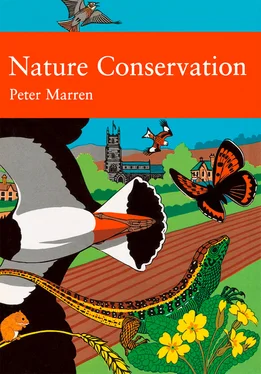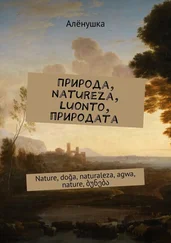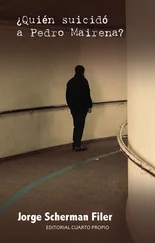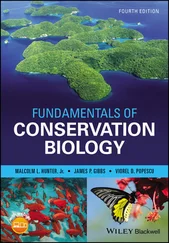Like other county trusts, Wiltshire runs a network of nature reserves. Among the 40-odd examples are Blackmoor Copse, famous for its woodland butterflies, which it took over in 1963, and several fine sweeps of downland, including Morgan’s Hill, Great Cheverell Hill and Middleton Down. Two, Ramsbury Meadow and High Clear Down, lie within walking distance of my home. All the Trust’s reserves are run by volunteers; unlike some trusts, Wiltshire has no full-time paid wardens. The Heritage Lottery and other donors have enabled the Trust to specialise in grassland management – an obvious choice since Wiltshire has more chalk downland than any other county, and also a fine series of unimproved neutral grassland meadows. However, the Trust no longer regards nature reserves simply as an end in themselves, but as demonstration sites, and as kernels within a wider area where sustainable and wildlife-friendly land management is the aim. The Wiltshire Trust is ‘farmer friendly’ and many landowners have served it in one way or another. ‘Farmers appreciate a pat on the back,’ says Gary Mantle. ‘It’s nice for them to hear a conservationist say “what a fantastic bit of land”, instead of being criticised all the time, especially when times are hard.’ The trouble nowadays is that managing almost any wildlife habitat has become uneconomic unless it is subsidised in some way, and the kind of stock farmer the trusts rely on most is going out of business.
Most county wildlife trusts contribute to the local planning process by providing details of places of local importance for wildlife which are not quite important enough to be SSSIs. In Wiltshire, these places are called, simply, ‘Wildlife Sites’. They are generally good examples of diminishing habitats, such as coppiced woodland or chalk downs, but also include sites for rare species. Their protection depends on the local authority, generally the district, but in the case of roadsides the county council. ‘Wildlife Sites’ are non-statutory, but in Wiltshire they appear in local plans with a presumption against development. The Trust is given an opportunity to object to unfavourable development, and if necessary defend its stance at a public inquiry. Broadly speaking these places receive about the same level of protection as SSSIs did in the 1970s – perhaps more so, given that local authorities are much more environmentally friendly than they were then.
In other traditional areas of trust activity, the focus has broadened. The county’s local biological records centre, long based at the county museum in Devizes just across the road, is now under the Trust’s wing. This in turn is now part of the National Biodiversity Network, a computerised Wildlife Sites system and public information service. Like all trusts, the Wiltshire one stands up for wildlife at public inquiries, ‘fighting hard to stop the destruction of important wildlife habitats’. But it also joins in the wider struggle to find acceptable policies that would avoid such destruction in the first place, both with ideas and by involving its members and the wider public in local and national campaigns.
Most recently, the Wiltshire Trust has become interested in broader environmental issues. The underlying premise is that it is no longer possible to separate wildlife issues from our own future. The Trust wants to demonstrate that it is doing its bit to promote ideas of energy saving, fair-trading and ‘sustainable gardening’, and practising what it preaches. Behind it lies a conviction that the Trust ought to have the support of at least 100,000 residents in the county, not just its current 10,000 members. To achieve that it needs to come to grips with issues that concern a lot of people, not just those who are keen on natural history. In 1994, the Trust took on the role of managing the county’s local Agenda 21 process. At the time, Mantle went on record as saying he was uncertain whether this would be a complete waste of time or the most important thing they could do – though it would be one or the other. Six years on, having seen the impact of Agenda 21 on tackling issues such as global warming by energy efficiency advice, minimising waste and working for fair trade at home and abroad, he believes they made the right decision. The Trust’s strategy for 2000-2005, headed ‘a sustainable future for wildlife and people’, is upbeat about ‘presenting a positive, hopeful face to the world’: ‘Working to a common purpose we can make a real difference’.
The Trust’s founder, Lady Radnor, recalled a line by Rudyard Kipling: ‘ And gardens are not made, By saying Oh how beautiful And sitting in the shade ’. Today life seems more complicated than it was back then: ‘the tunnel has grown longer and darker, and taken some very nasty turns’. Wildlife trusts are richer, which enables them to do more, and also to rethink the ground rules about what a local trust is for and what it has to say to the world. Gardens are indeed made by hard work, but they also need creativity and hope, as well as clean rainwater and sustaining soil.
Director: Gary Mantle OBE
Office: Elm Tree Court, Long Street, Devizes, Wiltshire SN10 1NJ.
Growth of a county wildlife trust: Wiltshire Wildlife Trust 1985-2000
4 Conservation Politics: SSSIs and the Law
I have in front of me a thick volume published by the then Department of the Environment and titled Wildlife Crime: A guide to wildlife law enforcement in the UK (Taylor 1996). Its purpose is to try and sort out the legal labyrinth of wildlife law as it stood in 1996, mainly for the benefit of policemen and other law enforcers. More than half of it is devoted to species – birds and their eggs, badgers, deer, seals and salmon, as well as the trade in endangered species. Lists of protected birds in their various grades and schedules take up seven pages, non-avian protected animals and plants another four. On the face of it, Britain’s wildlife looks well protected. But although protection laws may look like nature conservation, much of them are about animal welfare issues. Kindness to animals is an issue for the RSPCA. Conservationists are more concerned with the survival of populations and species than with individuals. However, the legal benefit enjoyed by our wild animals is decidedly mixed. The law has evolved, rather like the landscape, in an ad hoc way, and the result is chock-full of anomalies. Pat Morris (1993) has pointed out that while it is technically illegal to shine a torch at a hedgehog, you can squash one flat with your car without worrying about prosecution. An antique dealer risks a heavy fine for selling an old coat trimmed with pine marten fur, but the law does not help living martens very much. The badger is an exceptionally well-protected animal, but the Ministry of Agriculture slaughters thousands of them. Contrariwise, in the interests of the environment more deer need to be culled, but no one insists on it and so deer continue to multiply. In practice, the government nature conservation agencies spend remarkably little time on species protection. Unlike the US Fish and Wildlife Service, who carry guns and have the power to arrest, Britain’s wildlife agencies have no special powers of enforcement. They devote far more time to managing species under the Biodiversity Action Plan (see Chapter 11), but until 2000 the Plan had no basis in British law. The really important species laws boil down to two: the Wild Birds Protection Act of 1954 and its subsequent amendments, which protect virtually all wild birds, and the Wildlife and Countryside Act of 1981, which protects a lot of other rare animals and plants, mostly from imaginary threats, like collecting, and, more importantly, protects all species of bat, as if they were honorary birds. It is easy enough to protect a species on paper – you simply declare it protected – but quite another thing to bring a successful prosecution. In practice, most prosecutions are to do with birds and bats. Egg collectors, errant gamekeepers and careless timber treatment companies are the principal targets. Animal smugglers are dealt with under international codes enforced under EU regulations.
Читать дальше











![Various - Birds and Nature, Vol. 12 No. 5 [December 1902]](/books/745517/various-birds-and-nature-vol-12-no-5-december-thumb.webp)
![Various - Birds and Nature Vol. 11 No. 2 [February 1902]](/books/745533/various-birds-and-nature-vol-11-no-2-february-1-thumb.webp)